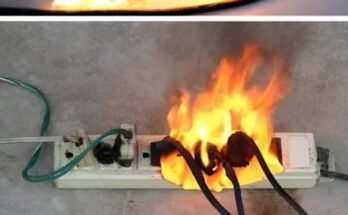Drainage of a Deep Abscess on the Back: Expert Insights
Are you familiar with the process of draining a deep abscess on the back? This procedure is often necessary to relieve pain, swelling, and infection that can occur when a pocket of pus forms beneath the skin. In this article, we will dive into the intricacies of draining a deep abscess on the back, sharing expert insights and tips for a successful procedure.
Understanding the Abscess
Before we delve into the drainage process, it’s essential to understand what an abscess is. An abscess is a localized pocket of pus that can develop in any part of the body, including the back. Common causes of abscesses include bacterial infections, blocked sweat glands, or foreign objects lodged in the skin.
When an abscess forms on the back, it can be particularly painful and debilitating. The skin may appear swollen, red, and tender to the touch. In some cases, the abscess may continue to grow in size, causing increasing discomfort for the individual.
When to Consider Drainage
In cases of deep abscesses on the back, drainage may be necessary to facilitate healing and prevent further complications. If the abscess is large, painful, or showing signs of infection such as fever or red streaks radiating from the site, it’s crucial to seek medical attention promptly.
Draining a deep abscess on the back should only be done by a trained healthcare professional, as improper drainage techniques can lead to serious complications and delayed healing. A healthcare provider will assess the abscess, determine the best approach for drainage, and provide appropriate care throughout the process.
The Drainage Procedure
During the drainage procedure, the healthcare provider will first clean the area surrounding the abscess with an antiseptic solution to reduce the risk of infection. They may also administer a local anesthetic to numb the area and minimize discomfort during the drainage process.
Next, a small incision is made in the skin overlying the abscess to allow the pus to drain out. The healthcare provider will gently press on the abscess to encourage the discharge of pus and debris. In some cases, a small drainage tube may be inserted to ensure that the abscess continues to drain effectively.
After the abscess has been drained, the healthcare provider will clean the area again and apply a sterile dressing to promote healing. Antibiotics may be prescribed to prevent infection and aid in the recovery process. It’s essential to follow all post-drainage care instructions provided by your healthcare provider to ensure proper healing.
Recovery and Follow-Up
Following the drainage of a deep abscess on the back, most individuals experience significant relief from pain and swelling. The healing process will continue over the following days, with the abscess site gradually closing and returning to normal.
It’s essential to monitor the site for any signs of infection, such as increased pain, redness, or drainage. If you have any concerns or if the abscess does not improve after drainage, contact your healthcare provider for further evaluation.
In conclusion, drainage of a deep abscess on the back is a common procedure that can provide significant relief and promote healing. By understanding the process, knowing when to seek medical attention, and following post-drainage care instructions, you can ensure a successful recovery. If you have any questions or concerns about an abscess on your back, don’t hesitate to reach out to your healthcare provider for guidance and support.
Meta Description: Learn expert insights on the drainage of a deep abscess on the back, including the procedure, recovery, and follow-up care. Seek medical attention for proper treatment.
So, are you ready to learn more about the drainage of a deep abscess on the back? By understanding the process, knowing when to seek medical attention, and following post-drainage care instructions, you can ensure a successful recovery. Don’t hesitate to reach out to your healthcare provider for guidance and support!


